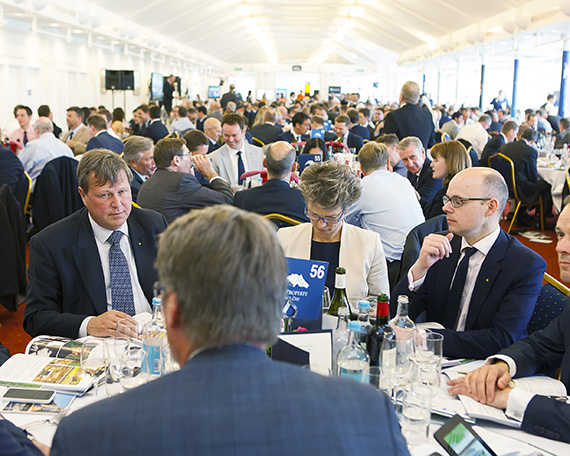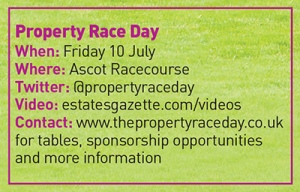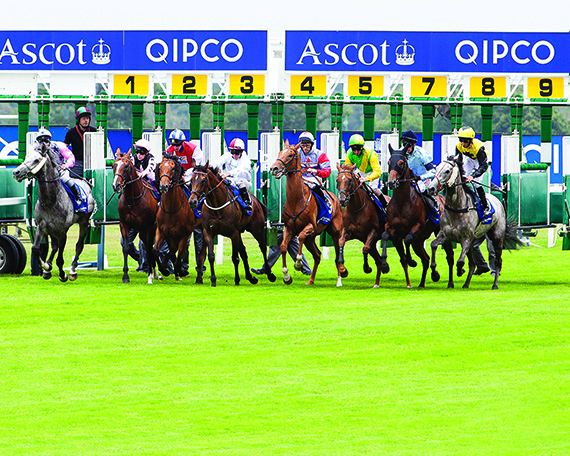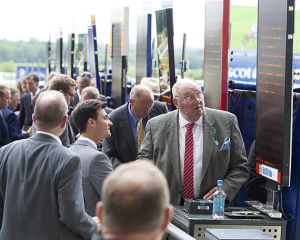The parallels between horse racing and property include studying form, having a gamble and backing a winner.
And over the past nine years the two worlds have established another connection, thanks to the annual Property Race Day, where the biggest winners are not just the punters who have a successful trip to the bookmaker but also a host of children’s charities, which have enjoyed a collective windfall of £1.2m.
Estates Gazette supports Property Race Day, when each year a dedicated committee of 12 people put on one of the most enjoyable industry networking events in the property calendar at Ascot Racecourse. The event remains true to its founding ambition: to raise as much as possible for an array of children’s charities.
 Each year a third of the fundraising is allocated to LandAid, and the charities to benefit from this year’s event include The Children’s Trust, Hope Foundation, Project Hope and SOS Children’s Villages.
Each year a third of the fundraising is allocated to LandAid, and the charities to benefit from this year’s event include The Children’s Trust, Hope Foundation, Project Hope and SOS Children’s Villages.
Race day was the brainchild of former Gresham House chief executive and horse racing fanatic Derek Lucie-Smith, who founded the event along with David Erwin, chief executive of UK capital markets at Cushman & Wakefield and John Hall, managing partner at Hamilton Partners.
If Lucie-Smith’s ownership of champion racehorse Paco Boy was the inspiration, then fundraising was the motivation. What began as a gathering of 400 people at Sandown racecourse has expanded to an event of 1,000 property race-goers, who stick defiantly by the expression to “keep yourself in the best company and your horses in the worst”.
Punters meet at London Waterloo, from where a charter train – the “Property Express” – takes them to Ascot. Channel 4 racing pundit Mike Cattermole emcees each year while guests compete in a silent and live auction over fine food and ample refreshments.
 Erwin, now chair of the committee, says: “Property Race Day has become one of the most established and outstanding days in the industry calendar, supported by all sectors of the property industry. There’s such great bonhomie.”
Erwin, now chair of the committee, says: “Property Race Day has become one of the most established and outstanding days in the industry calendar, supported by all sectors of the property industry. There’s such great bonhomie.”
Fundraising totals peaked in 2013, when the event raised £275,000. That year the cash pot was boosted by the first charity race, which saw 12 regular property desk jockeys pledge £5,000 to slog it out against their peers on horseback down the Ascot straight mile. Some were amateur horse-racers and others total chancers. All raced to supportive whoops and shouts along the straight – and all survived.
But Erwin nearly didn’t. He recalls lighting up a cigarette for the first time in 20 years to cope with the fear that something would go horribly wrong.
But don’t underestimate the pluck of the property industry. More wannabe jockeys have come forward for this year’s charity race than can be fielded. Proof then that, in Property Race Day, the industry has backed a winner.
A ride remembered
Patrick Lowther, director of investment at Cordea Savills, boldly put himself forward to ride in the 2013 charity race at Property Race Day
If there was any romanticism in the idea of living out a boyhood dream, it ended as I realised the enormity of the challenge of raising more than £5,000 and getting down to a schoolboy weight, not to mention finding a trainer who would let a desk jockey get on board a prized thoroughbred.
 With a month to go I was yet to find a mount for the race, until a rather liquid lunch (food was banned) with Cardiff agent Ross Griffin of Savills. I was put in contact with ex-Knight Frank man Tim Vaughan, who trained horses. Such was my desperation that I made the 4am start and was on his gallops at first light.
With a month to go I was yet to find a mount for the race, until a rather liquid lunch (food was banned) with Cardiff agent Ross Griffin of Savills. I was put in contact with ex-Knight Frank man Tim Vaughan, who trained horses. Such was my desperation that I made the 4am start and was on his gallops at first light.
The good news was that Tim had a horse (actually partly owned by my wife’s aunt); the bad news was that it was a two-mile stayer and therefore not entirely suitable for a sprint down the straight mile at Ascot. But at that late stage, beggars could not be choosers.
When the big day eventually came, I weighed in and went to the paddock for some final riding instructions. I was told that, if I were to stand any chance, it was imperative to start well and hold my nerve, rather than going early. Then all of a sudden I was released onto the course, beneath the majestic grandstands.
We all jostled for position and when the flag went down I was pleased to get a good start – although the rest of the field shortly blew past me. By the time we were back alongside the stands, I was practically bringing up the rear, though as the line got closer I found myself slicing through the field and just crept into third place! It was a magical end and a feeling of sheer exhilaration.
The starvation, early starts, anxiety, fundraising, and balancing family and work commitments with race preparation for six months have faded away and been replaced by memories of weekend mornings spent riding out on the gallops as the sun came up, tuition from a Derby-winning jockey, and, finally, riding out onto one of the greatest sporting arenas in the world.
And some of my friends even made money on me.
Hope and Homes for Children
Through the little-known international charity Hope and Homes for Children, Property Race Day has saved thousands of young people from the bleakest of fates.
The event has supported the charity to the tune of £220,000 since 2008, helping it to put children orphaned by the horrors of conflict, or marginalised by other major complications in Eastern Europe and Africa, into loving and supportive families.
In the first year of the partnership, Property Race day raised £50,000 for the charity’s work in Sudan. The country had been subjected to genocide, and a civil war showed no signs of abating. A study carried out in 2003 revealed that 110 babies were abandoned on the streets of the capital, Khartoum, every month, left by young, unmarried mothers fearing the stigma and severe punishment they otherwise faced.
Half of those babies died on the street. The ones that survived were taken to the Maygoma Institution for Babies, which at the time had an annual mortality rate of 80%. The few survivors suffered severe developmental delays and often chronic illness, owing to poor nutrition and lack of individual care.
Within three months of the 2008 Property Race Day, Hope and Homes for Children was able to move 170 babies and children into permanent family care. It continued to move children from the Maygoma Institution until last year, when the Sudanese government backed the closure of the orphanage.
It was described by the charity’s Jane Falconer as “one of the largest and most challenging closure projects we have ever faced”. Similar milestones have been achieved in Rwanda and Moldova.
Though small, Hope and Homes is recognised by Unicef and the World Health Organization as a world leader in reforming childcare systems through its model of de-institutionalisation.
rebecca.kent@estatesgazette.com












